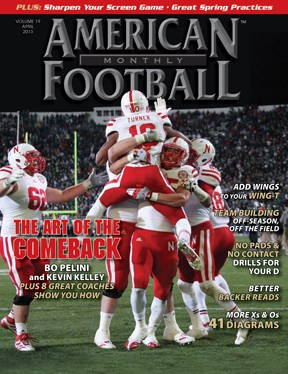Article CategoriesAFM Magazine
|
Strength Report – Creating an Edge in the Off-Seasonby: Rob TaylorOwner and Founder, Smarter Team Training © More from this issue Football players are getting faster. The process of increasing speed is two-fold. You must perform sprints as you would on game day, but you also have to increase lower-body strength and power. If you are looking for an edge this off-season, or just trying to add a new dynamic to the predictable programming, maybe it is time to revisit what you are doing in the weight room and during your conditioning sessions. Many programs across the country base their strength program on percentages. With multiple reps and set schemes that are touted as the “best”, one must question if any are really better than the other. When you look at your program, why do you have a separate plan for the “core lifts”, but expect the muscles that are trained during the “auxiliary lifts” to respond any differentl....The full article can only be seen by subscribers.
|
|
|||||||
| HOME |
MAGAZINE |
SUBSCRIBE | ONLINE COLUMNISTS | COACHING VIDEOS |
Copyright 2025, AmericanFootballMonthly.com
All Rights Reserved





